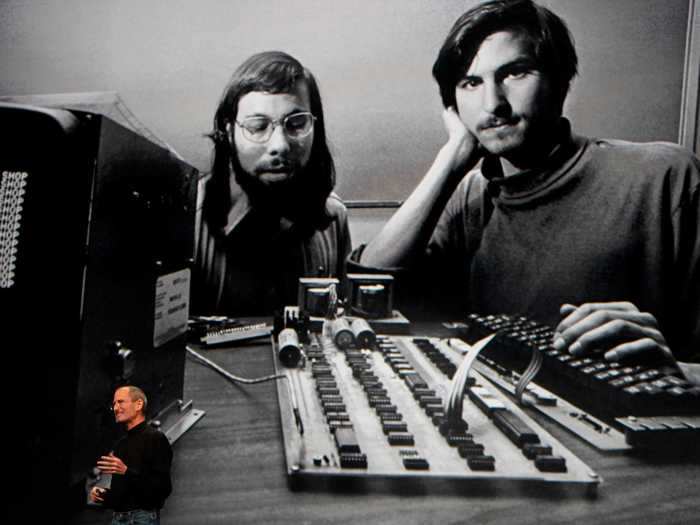
Kuni/AP
Apple just reached a $2 trillion market cap, a milestone made even more significant when you consider that Apple almost didn't get the chance to make it this far.
When Steve Jobs took over as CEO of Apple in 1997, the company had been struggling to find its legs in a market increasingly dominated by Microsoft and its partners.
Indeed, Michael Dell himself once quipped that if he were in Jobs' shoes, he'd shut Apple down and return the money to the shareholders.
Here's a look into the history of Apple in photos, from its inception, through its hard times, to the triumphant return of Jobs.


Source: Business Insider

Source: Business Insider

Source: Business Insider

Source: CNET

Source: The New York Times, CNBC

Source: Business Insider



Source: Business Insider

Source: Newsweek

Source: Byte Magazine, Newsweek


Source: The Guardian

Sculley was serving as Pepsi's youngest-ever CEO, but Jobs managed to bring him to Apple with the now-legendary pitch: "Do you want to sell sugared water for the rest of your life? Or do you want to come with me and change the world?"
Source: Forbes
Source: Business Insider

Source: Business Insider

Source: Business Insider, Fortune

Source: Fortune, Business Insider

Source: CNN

Source: Engadget, Cult of Mac

Source: Baltimore Sun, Time, MacWorld

Source: Cult of Mac

Source: Microsoft

Source: Washington Post, Los Angeles Times

Source: The New York Times


Source: The New York Times

Source: Cult of Mac

Source: CNBC


Source: Business Insider

Source: Cult of Mac

Source: CNBC

Source: Business Insider

Source: Business Insider
 Colon cancer rates are rising in young people. If you have two symptoms you should get a colonoscopy, a GI oncologist says.
Colon cancer rates are rising in young people. If you have two symptoms you should get a colonoscopy, a GI oncologist says. I spent $2,000 for 7 nights in a 179-square-foot room on one of the world's largest cruise ships. Take a look inside my cabin.
I spent $2,000 for 7 nights in a 179-square-foot room on one of the world's largest cruise ships. Take a look inside my cabin. An Ambani disruption in OTT: At just ₹1 per day, you can now enjoy ad-free content on JioCinema
An Ambani disruption in OTT: At just ₹1 per day, you can now enjoy ad-free content on JioCinema In second consecutive week of decline, forex kitty drops $2.28 bn to $640.33 bn
In second consecutive week of decline, forex kitty drops $2.28 bn to $640.33 bn
 SBI Life Q4 profit rises 4% to ₹811 crore
SBI Life Q4 profit rises 4% to ₹811 crore
 IMD predicts severe heatwave conditions over East, South Peninsular India for next five days
IMD predicts severe heatwave conditions over East, South Peninsular India for next five days

Copyright © 2024. Times Internet Limited. All rights reserved.For reprint rights. Times Syndication Service.